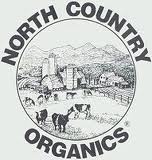 We thank our teams for a job well done!
We thank our teams for a job well done!
If your lawn has been treated with chemical fertilizer or not fertilized in the last three years it will take longer to go natural. Lawns that have not been fertilized will contain more sand than compost. When going natural, soil enrichment will lead to a healthier lawn.
Step 1. AERATE, AERATE, AERATE
This is one of the most important steps to a healthy lawn. Aeration permits oxygen, nutrients and water to enter the soil, which speeds up the microorganism activity that breaks down food. Earthworms and ants will also aerate the soil. Aeration should be done every fall and spring.
Step 2. FALL FERTILIZER APPLICATION
Use a slow release fertilizer or add compost as a soil amendment, this allows the grass plant to store nutrients over the winter, thus making them available in the spring. A low 6-1-3 can be added to your lawn for a green-up; but only use a natural fertilizer, like Baystate fertilizer. Compost can be spread on your lawn in spring if you did not do it in the fall.
Step 3. OVERSEED IN THE SPRING AND FALL
A thick lawn will make it harder for weeds and insects to attack.
Step 4. BALANCE YOUR SOIL
Soil pH should be neutral, around 7.0. This is the
best condition for the nutrients you apply to become available to the plant. Amend your soil with granular limestone to raise the PH.
Step 5. MOW AT 3 INCHES YEAR ROUND
Mowing at this height results in good root development, and leads to denser turf, shading out weeds and conserving your soil's moisture.
Step 6. WATER PROPERLY
Deep water penetration is prefered. Adjust you watering schedule to current weather reports. In general, start watering your lawn in early June. Early morning is the best time to water.
Avoid night watering as this encourages mold and disease.
Step 7. RAKE LAWN AGAIN IN LATE SPRING
Wait until any new grass has grown and the soil has dried. This will allow you to observe any potential
problem areas . Once this is complete add compost and seed to bare spots if needed.
Step 8. USE MILKY SPORE FOR GRUB CONTROL
Milky Spore an all natural pesticide free way to control grubs and many other root zone pests in turf.
Step 9. REMOVE WEEDS BY HAND
When hand pulling weeds, remove the entire root.
For easier removal use a dandelion fork, or wait until after it rains.
Step 10. USE CORN GLUTEN MEAL
Corn gluten meal is one of the best commercially available natural weed controls.